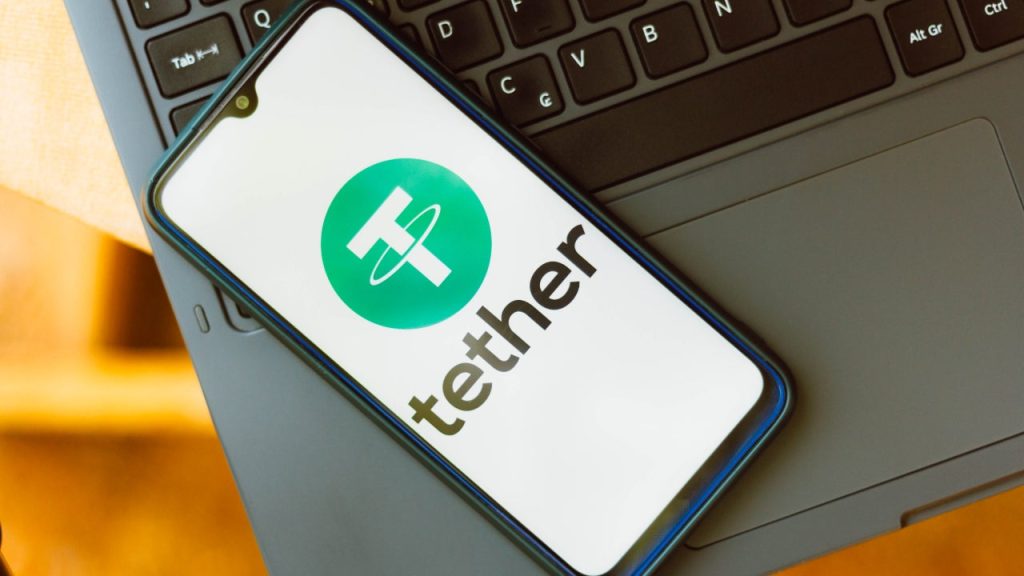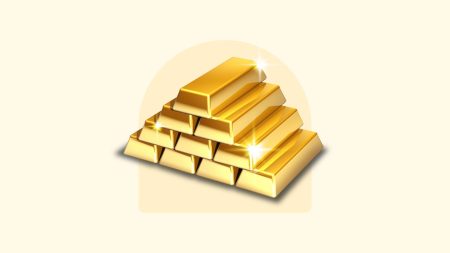A stablecoin is one type of cryptocurrency that is designed to maintain a fixed value over time. The value of a stablecoin is typically pegged to a specific real currency, often the U.S. dollar. In this setup, one unit of the cryptocurrency typically equals one unit of the real currency. Unlike highly volatile cryptocurrencies such as Bitcoin, the price of stablecoins is not meant to fluctuate.
But events in the stablecoin market – such as the plunge of TerraUSD – have federal officials looking closely at this area. Secretary of the Treasury Janet Yellen has cited risks to broad financial stability due to stablecoins, while the Federal Reserve issued a report discussing the uncertainty of what is actually backing stablecoins and the lack of oversight in that market.
Here’s how stablecoins work, what risks they present and how to check if a stablecoin is safe.
Stablecoins: What they are and how they work
A stablecoin is a cryptocurrency whose value is fixed to another asset, often currencies such as the U.S. dollar or the euro, though other assets are possible. This kind of crypto coin tracks the underlying asset, making its value stable over time, at least relative to the currency it’s pegged to. In effect, it’s as if the underlying asset has gone electronic, for example, like a digital dollar.
Because their goal is to track an asset, stablecoins are often backed by the specific assets they’re pegged to. For example, the organization issuing a stablecoin typically sets up a reserve at a financial institution that holds the underlying asset. So, a stablecoin could hold $100 million in reserve and issue 100 million coins with a fixed value of $1 per coin. If a stablecoin’s owner wants to cash out the coin, the real money can ultimately be taken from the reserve.
This structure stands in contrast to most cryptocurrencies, such as Bitcoin and Ethereum, which are backed by nothing at all. Unlike stablecoins, these other cryptocurrencies fluctuate greatly, as speculators push their prices up and down as they trade for profits.
While many stablecoins are backed by hard assets, others are not. Instead, these others use technical means (such as destroying some of the coin supply in order to create scarcity) to keep the price of the crypto coin at the fixed value. These are called algorithmic stablecoins, and they can be riskier than stablecoins backed by assets.
Why stablecoins are used in crypto trading
Stablecoins solve one of the key problems with many mainstream cryptocurrencies, namely, that their drastic fluctuations make it tough, if not impossible, to use them for real transactions.
“Digital currencies like Bitcoin and Ethereum are tremendously volatile, which makes pricing things in their terms very difficult,” says Anthony Citrano, founder of Acquicent, a marketplace for NFTs. “Stablecoins avoid this issue by locking their prices to a known reserve currency.”
In addition, their stability allows many stablecoins to be used as a functional currency within a crypto brokerage. For example, traders might convert Bitcoin into a stablecoin such as Tether, rather than into dollars. Stablecoins are available 24/7, making them more accessible than cash obtained through the banking system, which is closed overnight and on weekends.
Stablecoins can also be used with smart contracts, which are a kind of electronic contract that is automatically executed when its terms are fulfilled. The stability of the digital currency also helps circumvent disagreements that could arise when dealing with more volatile cryptocurrencies.
Most popular stablecoins
Stablecoins don’t usually get the same press (and hype) as other cryptocurrencies, in part because they don’t offer the same type of “get rich quick” opportunity. But a few are among the most popular cryptocurrencies by market capitalization, as of August 2024:
- Tether (USDT): $116 billion
- USD Coin (USDC): $35 billion
- Dai (DAI): $5 billion
Of course, the size of these coins pales in comparison to the largest cryptocurrencies, such as Bitcoin, with a market cap of nearly $1.2 trillion, and Ethereum, valued at more than $320 billion.
TerraUSD, an algorithmic stablecoin, had been another popular option, but it lost its peg to the dollar in May 2022. This stablecoin used other cryptocurrencies and a sophisticated system of arbitrage to maintain its valuation at the 1:1 level. But the decline in crypto markets and the subsequent loss of confidence in the stablecoin sent its price plummeting lower.
Risks of stablecoins
At first glance, stablecoins may appear to be low risk. In comparison to popular cryptocurrencies that are backed by nothing, they are. But stablecoins present some typical crypto risks and at least one of their own kind of risk, too:
- Security: Like other cryptocurrencies, stablecoins must be held somewhere, whether it’s your own digital wallet or with a broker or exchange. And that presents risks, since a given trading platform may not be secure enough or may have some vulnerabilities.
- Counterparty risk: While it may seem like cryptocurrency is highly decentralized, in reality you’re dealing with several parties in a transaction, including the bank holding the reserves and the organization issuing the stablecoin. They must be doing the right things (security, properly reserving, etc.) for the currency to maintain its value.
- Reserve risk: A key element of the stablecoin ecosystem are the reserves backing a stablecoin. Those reserves are the last backstop on a stablecoin’s value. Without them, the coin issuer cannot guarantee the value of a stablecoin with full confidence.
- Lack of confidence: If a stablecoin is not sufficiently backed by hard assets, especially cash, it could suffer a run and lose the peg against its target currency. That’s effectively what happened to the algorithmic stablecoin TerraUSD in May 2022, since it wasn’t backstopped by cash but rather by other cryptocurrencies. The price of the stablecoin broke and spiraled downward, as traders lost confidence in its ability to maintain the peg.
“The primary risk of stablecoins is that they aren’t fully backed by the reserve currencies they say they are,” says Citrano. “In an ideal situation, the issuer of the stablecoin has enough reserves of the currencies (in cash or other highly liquid, safe investments) to fully support the stablecoin. Any less than 100 percent and risk is introduced.”
How safe are stablecoins?
So how do you know if a stablecoin is safe? You’ll need to read the fine print on its issuer’s statements. And it’s absolutely essential that you do, Citrano says.
“Check the issuer’s reserve reports,” he says. “If they don’t provide any reserve reports, be extremely wary.”
And even then, stablecoin owners should pay careful attention to exactly what is backing their coin. The stablecoin Tether has come under fire for its disclosures on reserves. And those who think the cryptocurrency is fully reserved by actual dollars should be careful.
In its March 31, 2021, reserve report, the company showed that it had more reserves than it had liabilities. That’s good on the surface, but the devil is in the details:
- About 76 percent of its reserves are held as cash or cash equivalents (the vast majority of which is short-term corporate debt, also known as commercial paper).
- Almost 13 percent is secured loans.
- Nearly 10 percent is corporate bonds, funds and precious metals.
These other assets may act like actual cash much of the time, but they’re not real cash.
If you look closely, less than 4 percent was actual cash, while most is held in short-term corporate debt. This commercial paper is not the same as cash, especially in an emergency. If markets drop, those assets (and the other non-cash assets) could quickly decline in value, making the Tether coin less than fully reserved exactly when it may most need to be.
Unless a stablecoin commits to holding 100 percent (or more) of its reserves in cash, there’s no guarantee that the cash will be there to redeem coins. In this case, the value of stablecoins may prove to be a lot less than stable. Holders of stablecoins may end up on the losing end of an old-fashioned bank run, a surprising fate for a technology that markets itself as highly modern.
Since that time, Tether has reduced its holdings of some types of these non-cash assets.
In 2021, the U.S. Commodity Futures Trading Commission fined Tether $41 million for making untrue statements that its stablecoin was backed 100 percent by actual currency. Since the March 2021 report, Tether has reduced its holdings in commercial paper, and the company said that it would continue decreasing its reliance on this funding.
As of its June 30, 2024 reserve report, Tether still had more in reserves than it had in liabilities, and had switched the composition of its reserves:
- About 84 percent of its reserves are held as cash or cash equivalents, with about 80 percent of that amount in U.S. Treasury bills.
- About 6 percent is secured loans.
- Around 10 percent is precious metals, Bitcoin and “other investments.”
While Tether does have more reserves backing the stablecoin than it’s liable for, several of its investments – Bitcoin and the precious metals – may be volatile. And it’s not really clear what “other investments” consists of, only that the investments here don’t fit any other category. So its reserves – virtually all of which are not hard cash – may still be hit hard in tough times.
Finally, the best guarantee of a currency’s safety is that people will widely accept it in exchange for goods and services. And the only widely accepted currency in the U.S. — indeed, the only price in which products are ultimately denominated — is dollars.
Bottom line
Stablecoins provide some of the stability that is lacking in most cryptocurrencies. But those using stablecoins should know the risks they’re taking when they own them. While in most periods it may seem like stablecoins have limited risks, stablecoins may become the riskiest in a crisis when it ought to be the safest to own them.
Editorial Disclaimer: All investors are advised to conduct their own independent research into investment strategies before making an investment decision. In addition, investors are advised that past investment product performance is no guarantee of future price appreciation.
Read the full article here









